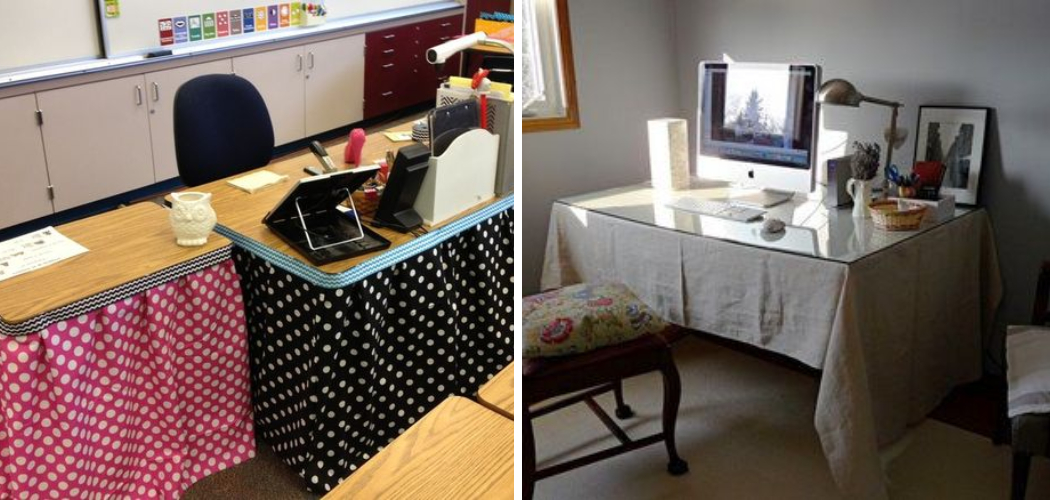When it comes to designing and organizing a workspace, the back of a desk is often overlooked. However, an exposed or unsightly back can detract from the overall aesthetics and functionality of your desk setup.

Fortunately, there are several effective methods to cover up the back of a desk and create a polished and professional look. Whether you have a standard office desk or a DIY workstation, concealing the back can contribute to a more visually appealing and cohesive workspace.
In this article, we will explore various techniques and materials on how to cover up the back of a desk.
From simple solutions like using adhesive wallpaper or fabric panels to more advanced options like building a custom back panel, we will provide you with practical tips to transform the back of your desk into an attractive and organized space. By implementing these ideas, you can elevate the overall aesthetic of your workspace and enhance productivity.
Importance of a Well-Designed Desk Space
Creating an organized and attractive workspace can have a major impact on productivity. Desk spaces should be designed to be comfortable, visually appealing, and efficient.
One key element of creating the perfect desk space is correctly covering up the back of a desk. Not only does it add aesthetic appeal to the workspace, but it also helps to hide cords and unsightly items like dust bunnies or spare office supplies.
Covering up the back of a desk is also beneficial for reducing distractions in your workspace and helping you focus on productive tasks. By taking the time to properly cover up the back of your desk, you’ll create an environment that is conducive to productivity and success in any work setting.
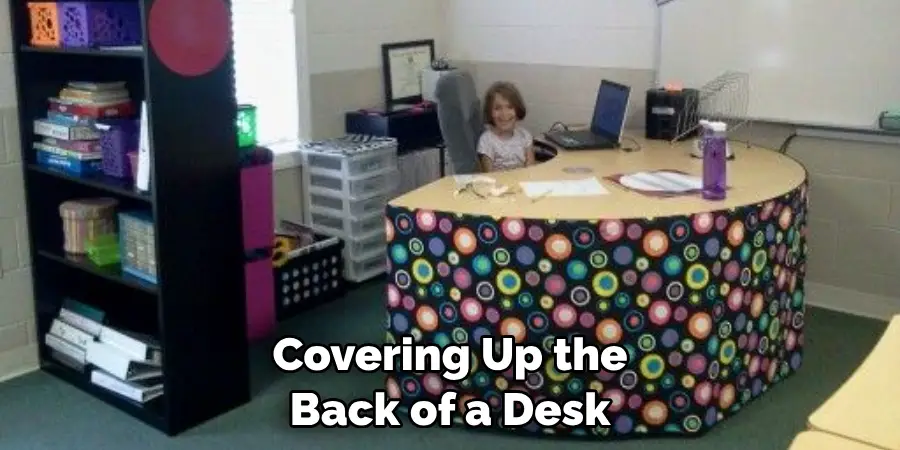
When choosing how to cover up the back of a desk, there are many options available. Many people opt for aesthetically-pleasing wallpapers, fabrics, or even corkboards as a fun and creative way to make their workspace more attractive.
Understanding the Back of Your Desk
The back of your desk can be a tricky area to cover up, especially if it has shelves or drawers. It’s important to take a look at the back and decide which parts you want to conceal.
Are there drawers or compartments that you don’t use? Do you have a lot of cables coming out from the back? These are all things to consider when figuring out how best to cover up the back of your desk.
If you have shelves on the back of your desk, one option is to purchase some removable storage boxes that will fit neatly in place. That way, you can easily slide them out whenever needed. If there are drawers on the back, some furniture covers may be necessary to hide their presence.
Cables can be a challenge when trying to cover the back of your desk. Fortunately, there are some clever solutions out there such as cable management boxes and decorative covers that can make them less of an eyesore. They come in all shapes and sizes so you should be able to find something that works for you.
10 Methods How to Cover up the Back of a Desk
Method 1: Adhesive Wallpaper
One of the easiest and most versatile ways to cover up the back of a desk is by using adhesive wallpaper. Measure the dimensions of the back panel and cut the wallpaper accordingly. Clean the surface of the desk’s back to ensure proper adhesion.
Peel off the backing of the wallpaper and carefully apply it to the back panel, smoothing out any air bubbles or wrinkles as you go. Trim off any excess wallpaper using a sharp utility knife. Adhesive wallpaper comes in various patterns and colors, allowing you to customize the look of your desk and match your personal style or office decor.
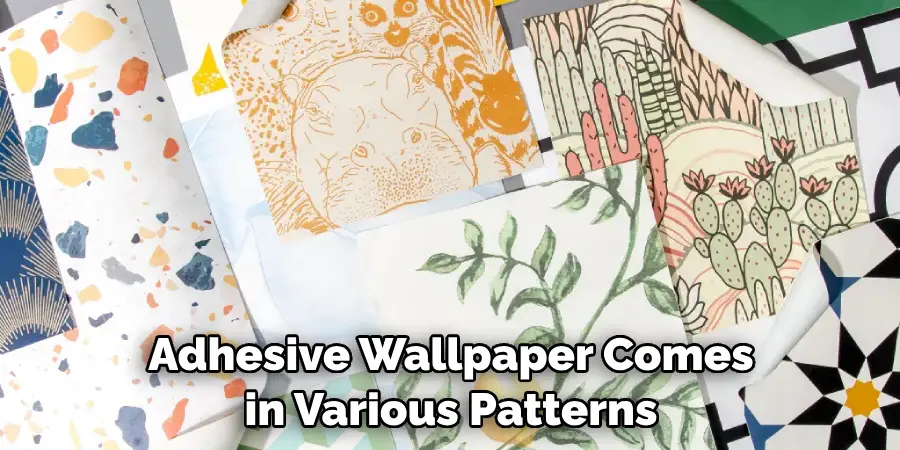
Method 2: Fabric Panels
For a softer and more textured look, consider using fabric panels to cover the back of your desk. Measure and cut the fabric to the appropriate size, leaving some extra on each side to wrap around the edges of the panel.
Apply a layer of fabric glue to the back panel and press the fabric onto it, ensuring it is taut and smooth. Fold the excess fabric over the edges and secure it in place with staples or more fabric glue. This method not only covers the back but also adds a touch of warmth and coziness to your workspace.
Method 3: Pegboard
Pegboard is a versatile and functional option for covering the back of a desk. It provides a surface on which you can hang various tools, office supplies, and even decorative items. Cut the pegboard to the size of the back panel and attach it using screws or adhesive.
You can also paint the pegboard in a color that complements your desk or room decor. Install hooks, shelves, and other pegboard accessories to create a customized organizational system that suits your needs.
Method 4: Corkboard
If you’re looking for a practical and bulletin board-like solution, consider using corkboard to cover the back of your desk. Cut the corkboard to the appropriate size and attach it using adhesive or small nails.
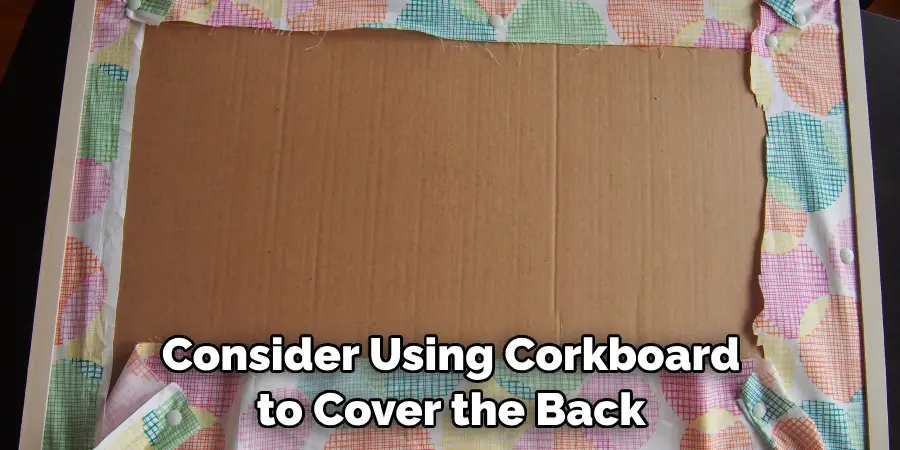
This method allows you to pin important notes, reminders, and photos directly onto the back panel. It also acts as a sound-absorbing surface, reducing noise levels in your workspace. Customize the corkboard by painting or decorating it to match your style.
Method 5: Magnetic Board
Similar to the corkboard method, a magnetic board can be used to cover the back of a desk while providing a functional surface. Cut a sheet of magnetic material to fit the back panel and secure it using adhesive or magnetic tape.
This allows you to attach notes, memos, and magnetic items such as paper clips and magnets to the board. Magnetic boards come in various colors and finishes, so you can select one that complements your desk and personal taste.
Method 6: Custom Back Panel
For those with woodworking skills or a desire to create a unique desk design, building a custom back panel is an excellent option. Measure the dimensions of the back area and cut a piece of plywood or other suitable material accordingly.
You can leave the panel as it is or add decorative elements such as carved patterns or cutouts. Attach the custom back panel using screws or other appropriate fasteners. This method allows for complete customization, ensuring that the back of your desk matches your specific preferences and style.
Method 7: Whiteboard Paint
Turn the back of your desk into a functional writing surface by using whiteboard paint. Clean the back panel thoroughly and apply multiple coats of whiteboard paint according to the manufacturer’s instructions.
Once dry, the back of your desk will transform into a whiteboard where you can write notes, draw diagrams, or brainstorm ideas. This method is especially useful for those who frequently need to jot down information or create visual aids in their workspace.
Method 8: Decorative Screens or Room Dividers
For a more elegant and decorative approach, consider using decorative screens or room dividers to cover the back of your desk. Choose a screen that complements your desk and room decor, ensuring it is the appropriate size to fit the back panel.
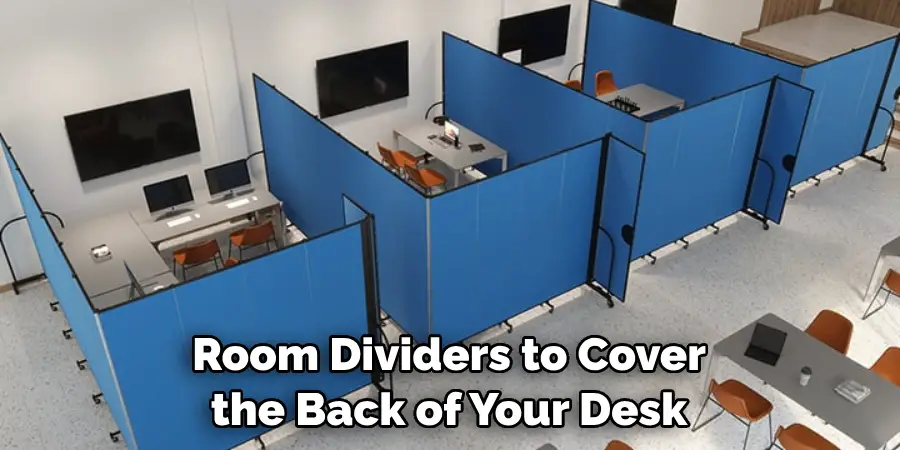
Place the screen or room divider behind your desk to add a stylish backdrop while also providing privacy or dividing the space. This method is particularly beneficial for open office layouts or shared work areas.
Method 9: Mirrored Panels
To create an illusion of depth and enhance the overall aesthetics of your desk, use mirrored panels to cover the back. Measure the dimensions of the back panel and cut mirror sheets accordingly.
Attach the mirrors using mirror adhesive or double-sided tape designed for mirrors. Mirrored panels reflect light, making the workspace appear brighter and more spacious. Additionally, they can serve as a convenient spot for quick self-checks or for adding a touch of elegance to your desk area.
Method 10: Decorative Wallpaper or Fabric
Lastly, you can use decorative wallpaper or fabric to cover the back of your desk for a visually striking effect. Select a pattern or design that suits your style and cut it to fit the dimensions of the back panel.
Apply the wallpaper or fabric using adhesive or a staple gun, ensuring a smooth and wrinkle-free application. This method allows for a creative and personalized touch, allowing you to showcase your individuality and taste in your workspace.
Conclusion
With these tips, you now have the necessary information to get creative and stylishly disguise the back of a desk. When used in combination, these techniques will add flare to any office or home workspace. Furthermore, if done properly, no one except yourself will ever know that there is a unstructured desktop behind it.
For any further questions on how to cover up the back of a desk please don’t hesitate to give us a call or click our contact page for more information. Let your inner creativity run wild and show off your unique sense of style while hiding the unsightly mess!
Having an organized work environment no longer has to depend solely on what others may think if your functional and decorative choices match then why not use them? Show us your version of how you covered up the back of a desk on social media and let’s see who can have both form and function at their workplace!

